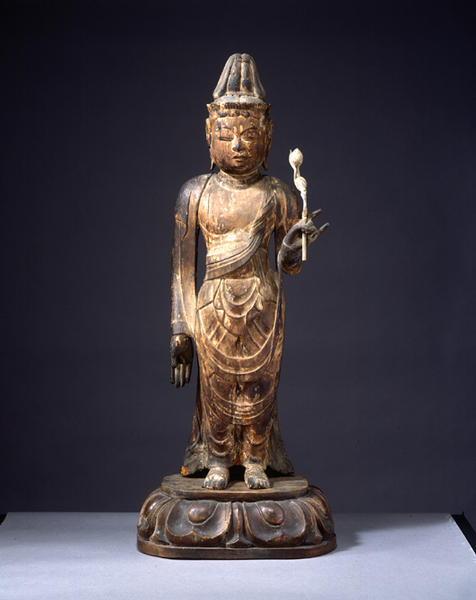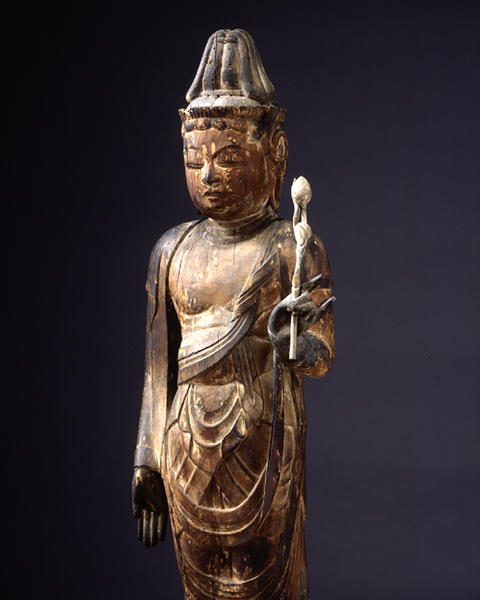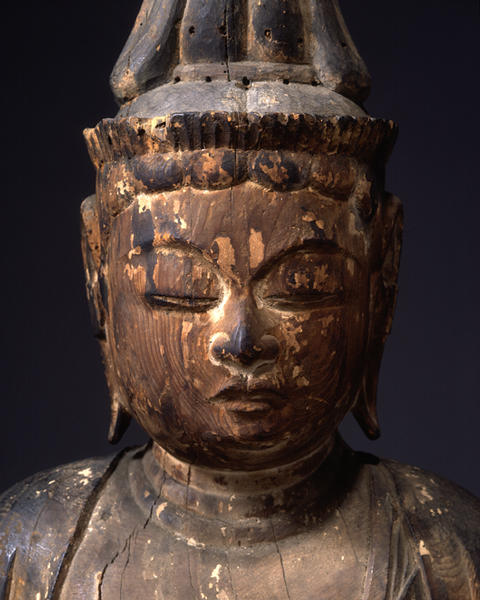Standing Kannon-Bosatsu (s:Avalokitesvara)
- Heian period
- 10-11c
- Single wood-block construction
- H-87.5 W-31
Catalogue Entry
The head, body, all of the right arm, upper left arm, and also the separated potion of the cloth draping over the right hand are carved out of a single piece of hinoki (Japanese cypress). (The center of the cypress tree out of which this was carved can be located somewhere behind the back of the head).
This Bodhisattva has a rather large head in proportion to the size of the rest of the body, with the top of the head adorned with a large knot of hair. A large upper body, with wide, prominent shoulders, makes a contrast against the small size of the lower body. This statue has somewhat long arms with its right hand extending straight down, as doing the fingers. The palm of the hand also faces forward. These features suggest a stylistic influence from the early Heian period. Pleats, folded edges, folds, and slightly deep, wrinkled ridges of the robe as seen at the knees are suggestive of the particular style of treatment of flowing robe, called the honpa style, of the previous era, while the shallowly-sculpted round face and small eyes and nose impart a gentle and peaceful impression, a stylistic feature that clearly foreshadows the Fujiwara style of the following era. From these distinctive features, the present image is estimated to have been created in the mid-Heian period between late 10th and early 11th century.
Originally, this image appears to have been finished in polychrome over a white base coat, judging from the remaining traces of coloring on the bottom edge of the robe.
The forearm of the left hand, the lotus flower, the front half of the feet including the mortise and tenon joints, and the pedestal are later additions.


